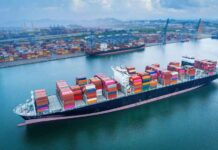Ensuring safe medication transport is about much more than moving a package from one place to another—it’s about preserving the integrity of life-saving medications, vaccines, and other pharmaceutical products that are crucial to patient health. Every step in this journey, from packaging to delivery, must be meticulously managed to guarantee that sensitive products remain effective and safe. Here, we delve into essential strategies to help ensure secure and reliable transportation for these critical shipments.
1. Understand Regulatory Compliance
Adhering to regulations is foundational to safe medication transport. Governments worldwide impose strict guidelines on pharmaceutical logistics to ensure that medications are handled correctly throughout the supply chain. In the U.S., for instance, the FDA and Department of Transportation (DOT) have stringent protocols on labeling, packaging, and transportation, all of which aim to preserve medication quality and efficacy.
It’s essential to be well-versed in these regulatory requirements for every region in which you operate. Compliance isn’t just a box to check—it’s the framework upon which you can build a reliable, safe transportation process. Once these standards are established within your operation, they provide a solid baseline for managing and transporting medications safely.
2. Invest in Proper Packaging Solutions
Packaging is crucial in safe medication transport. Medications, especially those sensitive to temperature and handling conditions, need protective packaging that prevents damage, contamination, and temperature fluctuations. This is particularly important for products like vaccines and biologics, which can become ineffective if exposed to improper temperatures.
Choosing appropriate packaging often means using insulated containers, refrigerants, and temperature-monitoring devices. For cold-chain medications, using packaging with advanced thermal insulation or active cooling systems is vital. Additionally, packaging must be durable enough to withstand potential bumps and jolts that may occur during transit—whether on the road, in the air, or at sea.
3. Real-Time Monitoring for Enhanced Visibility
With today’s advancements in logistics technology, real-time monitoring is a must for safe medication transport. Real-time tracking allows logistics teams to follow shipments closely, monitoring variables like location, temperature, and humidity throughout the journey. This technology is invaluable in spotting potential issues early, allowing teams to intervene before minor issues escalate into major problems.
Temperature and environmental changes can significantly impact medication efficacy. For instance, a minor deviation can spoil sensitive medications, leading to wasted products and potential harm to patients. Real-time monitoring provides a failsafe by delivering continuous visibility into these conditions, enabling quick responses that keep medications safe.
4. Cold Chain Management for Temperature-Sensitive Medications
Temperature-sensitive pharmaceuticals require robust cold chain management to maintain safe medication transport. Cold chain logistics ensure that products remain within specific temperature ranges from the point of origin to the final destination. Even slight temperature deviations can have serious consequences, making it crucial to partner with logistics providers who specialize in cold chain transport.
Cold chain experts have the necessary equipment—such as refrigerated vehicles and temperature-controlled storage facilities—to maintain the required conditions. Additionally, preparing for unexpected issues, like delays or equipment malfunctions, is crucial. Building contingency plans, such as having backup refrigeration units or alternative routes, helps maintain the cold chain even under challenging circumstances.
5. Selecting the Right Logistics Partner
Not every logistics provider has the expertise needed for safe medication transport. Choosing a logistics provider with experience in pharmaceutical transport ensures that they understand the complexities involved. Look for partners who have specific knowledge in handling temperature-sensitive medications, contingency planning, and the necessary infrastructure for regulated shipments.
When evaluating potential partners, ask about their experience with the types of medications you transport. For instance, do they understand the unique requirements for cold-chain pharmaceuticals? Are they equipped to handle delays or emergencies without compromising product integrity? Selecting the right logistics provider helps ensure that your shipments remain safe and arrive in perfect condition.
6. Training and Education for Team Members
A well-trained logistics team is essential to safe medication transport. Whether warehouse staff, drivers, or delivery personnel, each team member must know how to handle pharmaceuticals properly and respond to potential issues. Training programs should cover essential aspects like maintaining the cold chain, understanding packaging requirements, and managing emergency protocols.
By providing regular training sessions, you reduce the risk of errors and ensure that everyone involved understands their role. Courses should also include best practices for hygiene, regulatory compliance, and using monitoring equipment. This approach keeps employees informed, minimizes mistakes, and helps ensure that medications are delivered safely and effectively.
7. Route Optimization for Timely Delivery
Efficient route planning is another important factor in safe medication transport. Delays can compromise medication quality, especially for temperature-sensitive products. Using advanced route optimization software, logistics teams can identify the most efficient routes, avoiding delays and ensuring medications reach their destination on time.
Real-time traffic data can help dispatchers quickly reroute drivers in the event of road closures or other disruptions. Automated dispatching tools also allow for assigning vehicles and drivers based on location and urgency, minimizing the risk of spoilage due to extended transit times.
8. Emergency Preparedness for Unforeseen Circumstances
Even with thorough planning, unforeseen issues can still arise during safe medication transport. Situations like extreme weather, equipment failures, or vehicle breakdowns can disrupt delivery schedules. Having contingency plans in place helps your team navigate these scenarios without compromising medication quality.
Your emergency protocols should cover alternative routes, backup refrigeration options, and access to secondary logistics providers when necessary. By preparing for unexpected events, you reduce the risk of delays and ensure that medications remain safe and effective despite disruptions.
Conclusion: Ensuring Safe Medication Transport
Transporting medications safely requires meticulous planning, precise execution, and a comprehensive understanding of the specific requirements for each type of pharmaceutical product. By following these strategies—understanding regulatory compliance, using the right packaging, leveraging real-time monitoring, mastering cold chain management, and more—you can significantly reduce risks and ensure the safe transport of essential medications.
In today’s world, safe medication transport is essential to patient health and the reliability of healthcare systems. As we continue to improve and adapt new logistics strategies, we help guarantee that life-saving treatments reach those who need them safely, on time, and in their most effective form. By implementing these strategies and partnering with knowledgeable logistics providers, companies can achieve secure and efficient pharmaceutical transport, ultimately protecting patient health and strengthening healthcare delivery.

























